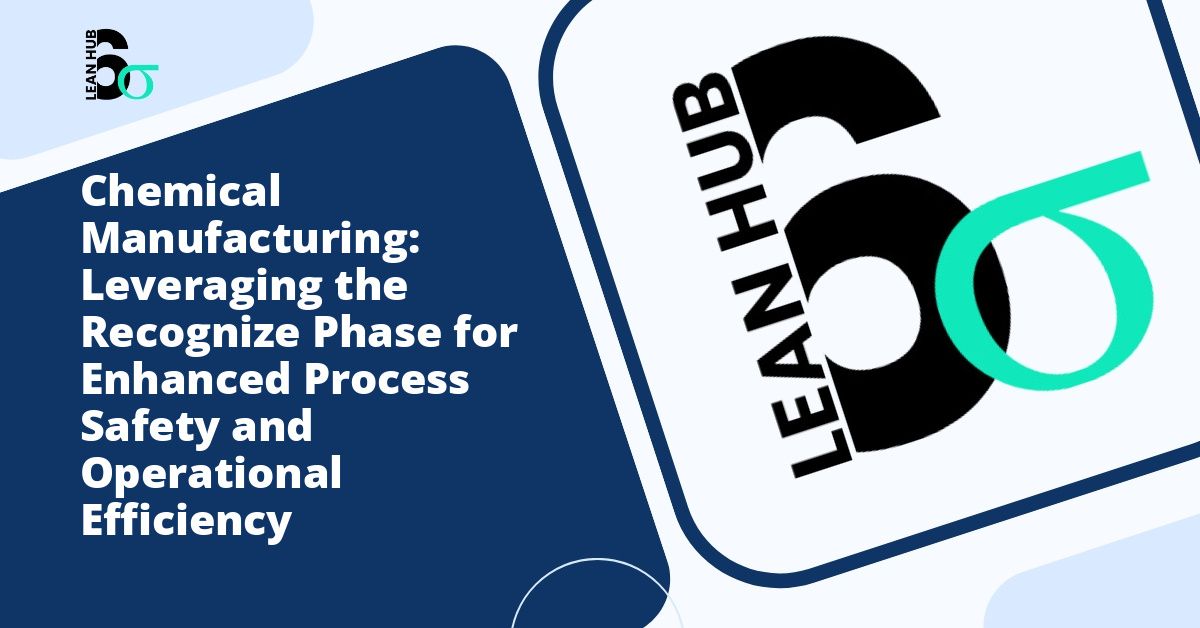Every successful process improvement initiative begins with careful planning and risk assessment. In the context of lean six sigma methodologies, the recognize phase serves as the foundation for identifying problems worth solving and understanding the potential obstacles that may emerge during implementation. However, this critical initial stage is often where many projects encounter their first significant challenges. Understanding what could go wrong during the recognize phase can mean the difference between project success and costly failure.
Understanding the Recognize Phase in Lean Six Sigma
The recognize phase represents the starting point of any lean six sigma initiative. During this stage, organizations identify opportunities for improvement, define project scope, and assess the potential value of addressing specific business problems. This phase requires teams to examine current processes, gather preliminary data, and determine whether pursuing a full-scale improvement project makes strategic sense. You might also enjoy reading about How to Get Buy-In for Your Six Sigma Project During the Recognize Phase.
While the recognize phase might seem straightforward, it contains numerous potential pitfalls that can undermine the entire project before it truly begins. Organizations that fail to conduct thorough risk assessments during this initial stage often discover problems too late in the process, leading to wasted resources, missed opportunities, and frustrated stakeholders. You might also enjoy reading about The Psychology of Problem Recognition: Overcoming Cognitive Biases for Better Decision-Making.
Common Risks During the Recognize Phase
Inadequate Problem Definition
One of the most prevalent risks in the recognize phase involves poorly defined problems. Teams often rush to identify issues without fully understanding their scope, impact, or root causes. This hasty approach can result in projects that address symptoms rather than underlying problems, leading to temporary fixes that fail to deliver lasting improvements. You might also enjoy reading about Big Data and AI: Modern Approaches to the Recognize Phase in Lean Six Sigma.
When problem statements remain vague or overly broad, teams struggle to measure success effectively. Without clear boundaries and specific objectives, lean six sigma projects can expand uncontrollably, consuming resources without delivering meaningful results. Organizations must invest adequate time in crafting precise problem statements that clearly articulate what needs improvement and why it matters to the business.
Insufficient Stakeholder Engagement
Another significant risk involves failing to engage the right stakeholders early in the process. The recognize phase requires input from various perspectives, including frontline employees, managers, customers, and executives. When teams overlook key stakeholders or fail to secure their buy-in during this initial stage, they often encounter resistance later when implementation begins.
Stakeholder misalignment can manifest in multiple ways. Executives might not prioritize the project if they do not understand its strategic value. Employees who will implement changes might resist if they were not consulted during problem identification. Customers might not benefit if their needs were not considered when defining the improvement opportunity.
Inaccurate Scope Assessment
Scope-related risks represent another common challenge during the recognize phase. Teams frequently underestimate the complexity of problems they intend to solve, leading to projects that require more time, resources, and expertise than initially anticipated. Conversely, some organizations define scopes too narrowly, missing opportunities to address interconnected issues that could benefit from a comprehensive approach.
Project scope affects everything from team composition to timeline expectations and resource allocation. When scope assessment proves inaccurate during the recognize phase, organizations may find themselves unable to complete projects as planned, forcing them to either expand budgets significantly or abandon initiatives before achieving meaningful results.
Data-Related Risks in Problem Recognition
Relying on Insufficient or Poor Quality Data
Data quality issues pose serious risks during the recognize phase of lean six sigma projects. Teams often base their problem identification on incomplete information, anecdotal evidence, or outdated metrics. This shaky foundation can lead to pursuing improvement opportunities that do not actually exist or that matter less than initially believed.
Quality data collection during the recognize phase requires systematic approaches and verification methods. Organizations must ensure that the information they use to identify problems accurately reflects current conditions and that measurement systems provide reliable insights. Without this rigor, teams risk building entire improvement initiatives on faulty assumptions.
Ignoring Baseline Performance Metrics
Failure to establish clear baseline metrics during the recognize phase creates problems throughout the entire project lifecycle. Without understanding current performance levels, teams cannot accurately measure improvement or demonstrate the value of their efforts. This oversight makes it nearly impossible to determine whether implemented changes actually deliver the expected benefits.
Baseline metrics serve multiple purposes in lean six sigma projects. They help justify the investment of resources, provide targets for improvement, and enable teams to track progress objectively. Organizations that skip this step during the recognize phase often struggle to prove project success, even when they implement genuinely beneficial changes.
Strategic and Organizational Risks
Misalignment with Business Objectives
One of the most damaging risks involves pursuing improvement projects that do not align with broader organizational strategies. When teams identify problems in isolation without considering strategic priorities, they may invest significant effort in solving issues that matter little to overall business success. This misalignment wastes resources and diminishes support for future improvement initiatives.
The recognize phase must include careful evaluation of how potential projects support strategic goals. Teams should assess whether solving identified problems will advance key business objectives, improve competitive positioning, or enhance customer value. Without this strategic lens, lean six sigma efforts can become disconnected from what truly matters to organizational success.
Resource Availability Miscalculation
Many organizations fail to accurately assess resource requirements during the recognize phase. They identify ambitious improvement opportunities without confirming that necessary personnel, funding, technology, and time will be available. This optimistic planning leads to projects that stall mid-implementation when resource constraints become apparent.
Comprehensive resource assessment should examine multiple dimensions. Do team members have the required skills and expertise? Can key personnel dedicate sufficient time without neglecting their regular responsibilities? Are financial resources available not just for implementation but also for ongoing support? Organizations must answer these questions honestly during the recognize phase to avoid setting projects up for failure.
Mitigating Risks Through Structured Assessment
Implementing a Formal Risk Review Process
Organizations can significantly reduce recognize phase risks by implementing structured review processes. These formal assessments should examine potential problems from multiple angles, considering technical, organizational, and strategic dimensions. By systematically evaluating risks before committing to full project implementation, teams can make informed decisions about which opportunities to pursue.
Effective risk review processes involve multiple stakeholders who bring diverse perspectives. Cross-functional teams can identify potential issues that might escape notice when evaluation remains within a single department or discipline. This collaborative approach strengthens problem definition and increases the likelihood of project success.
Creating Clear Decision Criteria
Establishing explicit criteria for project selection helps organizations avoid many recognize phase pitfalls. These criteria should address factors such as strategic alignment, expected return on investment, resource requirements, implementation complexity, and stakeholder impact. When teams apply consistent standards during problem evaluation, they make better decisions about which improvement opportunities deserve pursuit.
Decision criteria should balance multiple considerations rather than focusing exclusively on any single factor. A project might promise significant financial returns but require resources the organization cannot spare. Another opportunity might align perfectly with strategic goals but lack adequate data to support effective implementation. Balanced evaluation helps organizations choose projects with the highest probability of delivering meaningful value.
Conclusion
The recognize phase of lean six sigma projects carries significant risks that can undermine even the most well-intentioned improvement initiatives. From inadequate problem definition to insufficient stakeholder engagement, from poor data quality to strategic misalignment, numerous challenges can emerge during this critical initial stage. However, organizations that conduct thorough risk assessments and implement structured evaluation processes can navigate these challenges successfully.
By understanding what could go wrong during the recognize phase and taking proactive steps to address potential issues, organizations position their lean six sigma projects for success. This careful preparation pays dividends throughout the project lifecycle, leading to more focused efforts, better resource utilization, and improved outcomes. The time invested in comprehensive risk assessment during problem recognition represents not a delay but rather an essential foundation for lasting process improvement.








